Intel released the new generation framework of Sandy Bridge at early January, 2011; meanwhile, LGA 1155 is provided for support.
Compared with the specifications of several platforms in the past, the LGA 1155 is provided with a lot of modifications in CPU overclocking (OC) at this time.
Firstly, when a CPU with the external frequency of 100 MHz is overclocking, the other surrounding clock rates will be increased accordingly, thus the upper limit will fall around 110 MHz.
Although the new 32nm process is introduced into the new generation 4 cores CPUs, overclocking can be only achieved by using frequency multiplication.
The model names of i5-2500K and i7-2600K that are two kinds of CPUs without lock frequency multiplication have been released for a long time, which are considered as the representatives of the overclocking line.
However, the overclocking can be only done by working with the chipset of overclocking frequency multiplication, i.e., P67 or Z68.

The overclocking environment for LGA 1155 is simply declared above, hoping the users can aware of the hardware for the equipment clearly.
The middle-level CPU featured by overclocking is Core i5-2500K, while the advanced-level is Core i7-2600K.
The main difference between them is that the 2600K is provided with Hyper-Threading (HT) technology and an 8MB L3 cache, while the 2500K is only provided 6 MB L3 cache without HT.
This time I pursue Core i7-2700K which will appear on the market very soon and replace the advanced 2600 K.
The total clock rate of 2700K is 3.5 GHz, which supports the new generation Turbo Boost 2.0 and can reach the maximum performance of 3.9 GHz.
The real 4 Cores are incorporated into the Hyper-Threading technology, so that eight threading can be executed, 4C/8T for short.
With the 32 nm process, the power consumption of 95W and the 8-MB L3 Cache, the 2700K, surpassing the 2600K 100MHz, becomes the most advanced CPU of LGA 1155.
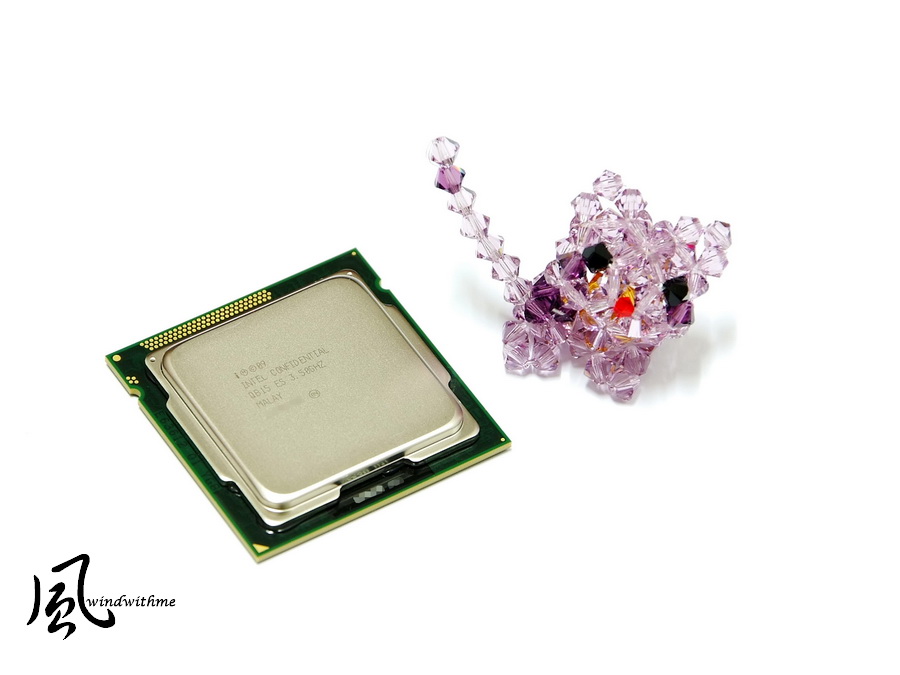
The rear side of the 2700K is still D2 Revision, so that there is little difference in appearance between the 2700K and the 2600K at this part.

The MB is the latest Z68 high-level chipset of LGA 1155, i.e., the latest version TZ68K+ released by BIOSTAR.
The appearance and the specification are the same as that of the TZ68A+ shared before and the primary difference is supply voltage of CPU.
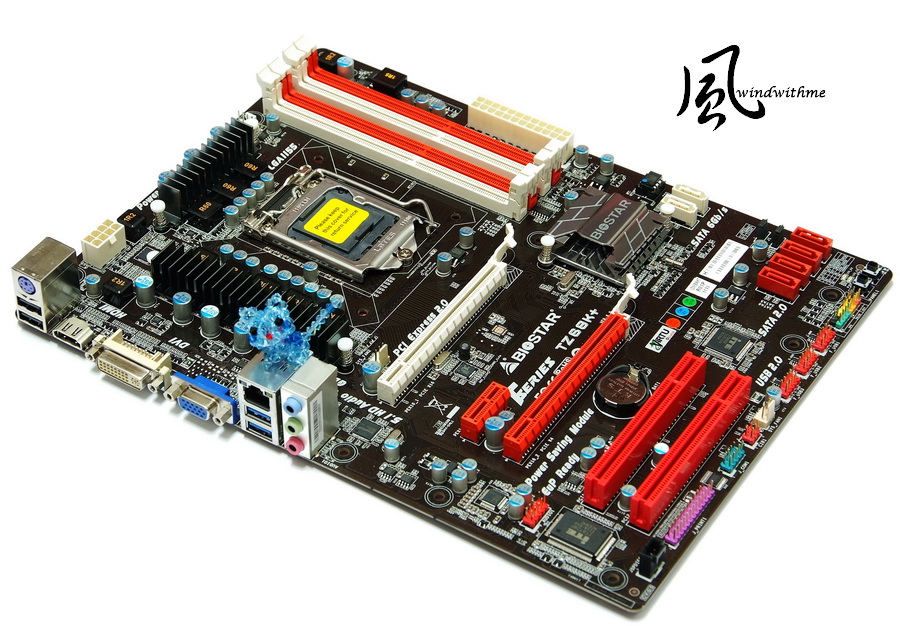
Although the TZ68K+ is the new edition of BIOSTAR Z68, the price is still about US$99, thus it can challenge the low-price market of ATX Z68.
By using the well-marked red-black matching, it has the most specifications as that of the Z68 series with the built-in Power/Reset button and a simple debugging LED.

With respect to IO, there are three types among which the two blue USBs 3.0 can provide high-speed transmission.
If provided two more USBs 2.0, it would be more perfect with respect to the scalability.

The previous TZ68A+ is designed with four-phase power supply only, while the new edition TZ68K+ is provided with eight-phase power supply, which is the primary difference.
However, as mentioned before, one-phase power supply can provide about 30-40 W, so , the four-phase power supply is already quite enough for overclocking of power consumption of Intel CPU.

The heat sinks above the Z68 chipset look good because of being cut by a special manner.
Two native SATA3 units of Z68 are positioned at the right side, which are used at a general environment or in a Raid0 state.

Test platform
CPU: Intel Core i7-2700K
MB: BIOSTAR TSERIES TZ68K+
DRAM: CORSAIR CMZ8GX3M2A1866C9R
VGA: Intel HD Graphics 3000
HD: Intel 510 Series 120GB
POWER: Thermaltake TR2 450W
Cooler: CORSAIR Hydro Series H80
OS: Windows7 Ultimate 64bit

Firstly, a performance test is performed by using the preset value of CPU.
Preset the performance
CPU 100 X 35 => 3500 MHz (booting Turbo Boost, and then C1E)
DDR3 1599.8 CL7 8-7-22 1T
Hyper PI 32M X8 => 15m 21.977s
CPUMARK 99 => 597

Compared with the specifications of several platforms in the past, the LGA 1155 is provided with a lot of modifications in CPU overclocking (OC) at this time.
Firstly, when a CPU with the external frequency of 100 MHz is overclocking, the other surrounding clock rates will be increased accordingly, thus the upper limit will fall around 110 MHz.
Although the new 32nm process is introduced into the new generation 4 cores CPUs, overclocking can be only achieved by using frequency multiplication.
The model names of i5-2500K and i7-2600K that are two kinds of CPUs without lock frequency multiplication have been released for a long time, which are considered as the representatives of the overclocking line.
However, the overclocking can be only done by working with the chipset of overclocking frequency multiplication, i.e., P67 or Z68.

The overclocking environment for LGA 1155 is simply declared above, hoping the users can aware of the hardware for the equipment clearly.
The middle-level CPU featured by overclocking is Core i5-2500K, while the advanced-level is Core i7-2600K.
The main difference between them is that the 2600K is provided with Hyper-Threading (HT) technology and an 8MB L3 cache, while the 2500K is only provided 6 MB L3 cache without HT.
This time I pursue Core i7-2700K which will appear on the market very soon and replace the advanced 2600 K.
The total clock rate of 2700K is 3.5 GHz, which supports the new generation Turbo Boost 2.0 and can reach the maximum performance of 3.9 GHz.
The real 4 Cores are incorporated into the Hyper-Threading technology, so that eight threading can be executed, 4C/8T for short.
With the 32 nm process, the power consumption of 95W and the 8-MB L3 Cache, the 2700K, surpassing the 2600K 100MHz, becomes the most advanced CPU of LGA 1155.

The rear side of the 2700K is still D2 Revision, so that there is little difference in appearance between the 2700K and the 2600K at this part.

The MB is the latest Z68 high-level chipset of LGA 1155, i.e., the latest version TZ68K+ released by BIOSTAR.
The appearance and the specification are the same as that of the TZ68A+ shared before and the primary difference is supply voltage of CPU.

Although the TZ68K+ is the new edition of BIOSTAR Z68, the price is still about US$99, thus it can challenge the low-price market of ATX Z68.
By using the well-marked red-black matching, it has the most specifications as that of the Z68 series with the built-in Power/Reset button and a simple debugging LED.

With respect to IO, there are three types among which the two blue USBs 3.0 can provide high-speed transmission.
If provided two more USBs 2.0, it would be more perfect with respect to the scalability.

The previous TZ68A+ is designed with four-phase power supply only, while the new edition TZ68K+ is provided with eight-phase power supply, which is the primary difference.
However, as mentioned before, one-phase power supply can provide about 30-40 W, so , the four-phase power supply is already quite enough for overclocking of power consumption of Intel CPU.

The heat sinks above the Z68 chipset look good because of being cut by a special manner.
Two native SATA3 units of Z68 are positioned at the right side, which are used at a general environment or in a Raid0 state.

Test platform
CPU: Intel Core i7-2700K
MB: BIOSTAR TSERIES TZ68K+
DRAM: CORSAIR CMZ8GX3M2A1866C9R
VGA: Intel HD Graphics 3000
HD: Intel 510 Series 120GB
POWER: Thermaltake TR2 450W
Cooler: CORSAIR Hydro Series H80
OS: Windows7 Ultimate 64bit

Firstly, a performance test is performed by using the preset value of CPU.
Preset the performance
CPU 100 X 35 => 3500 MHz (booting Turbo Boost, and then C1E)
DDR3 1599.8 CL7 8-7-22 1T
Hyper PI 32M X8 => 15m 21.977s
CPUMARK 99 => 597



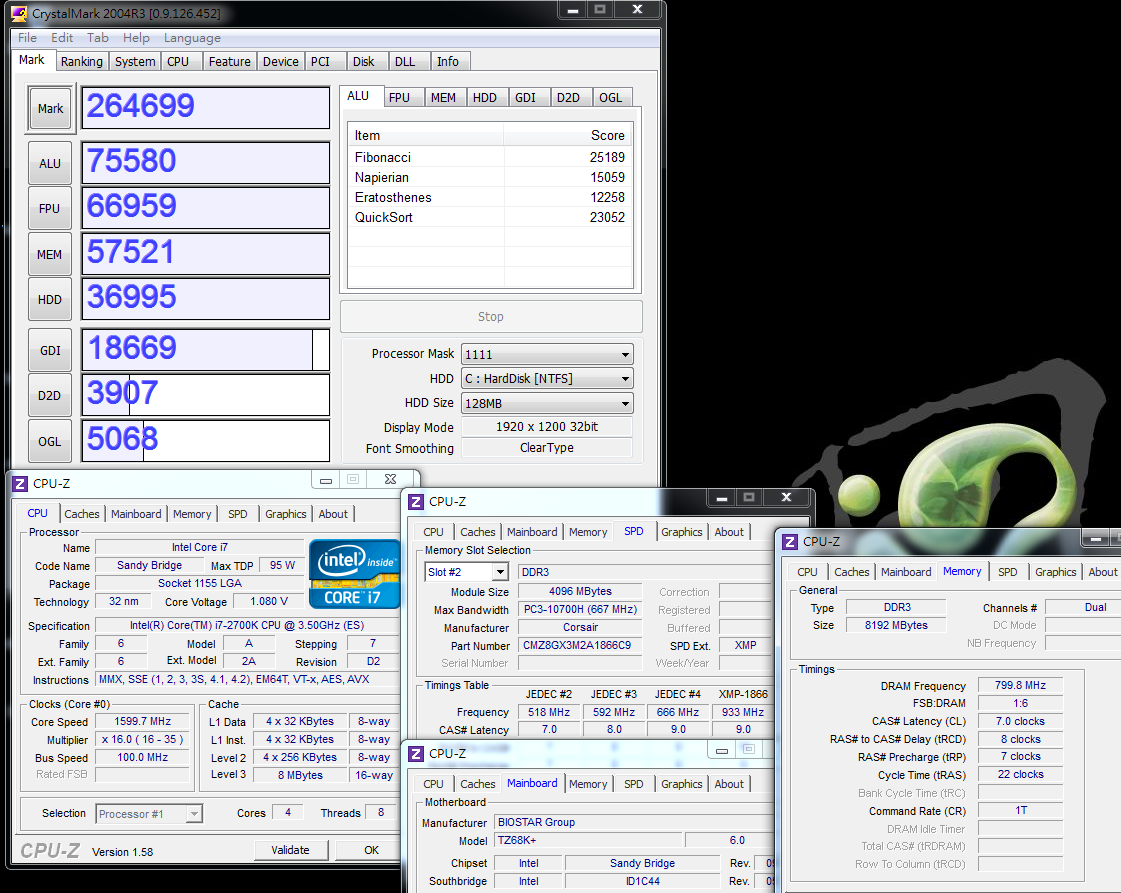
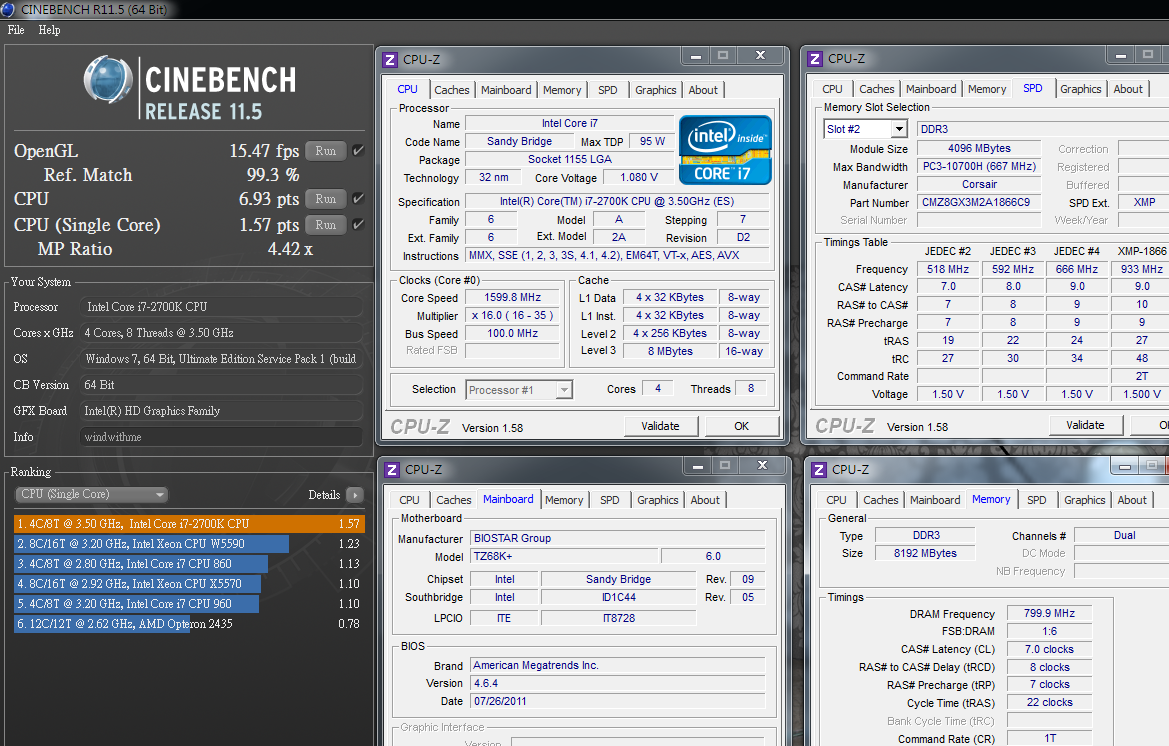



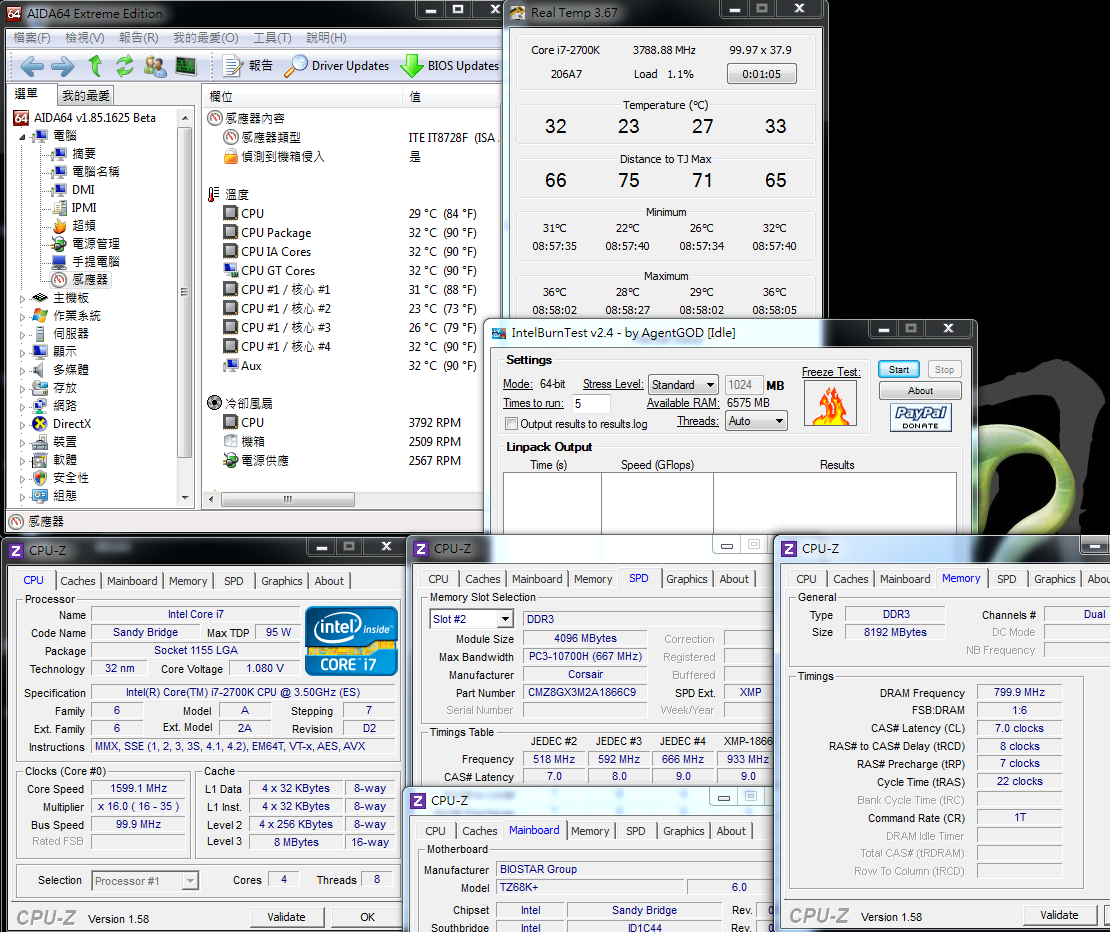

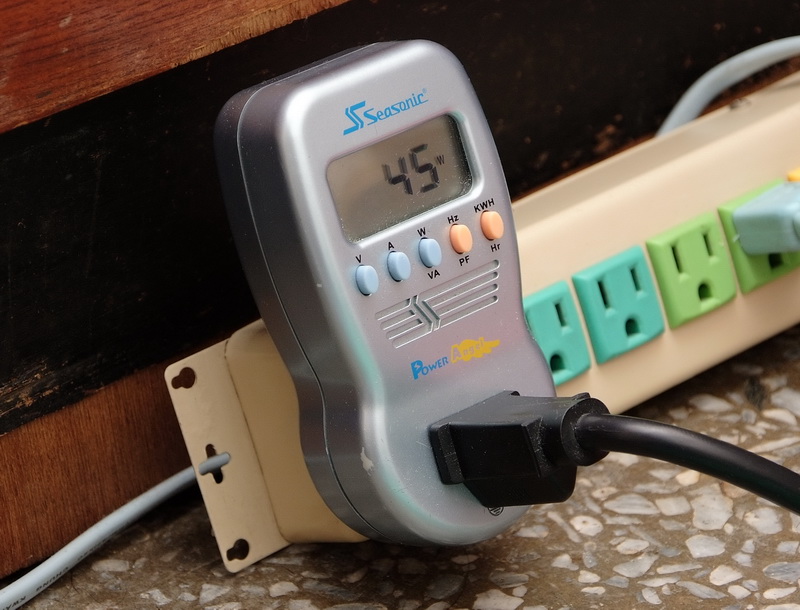
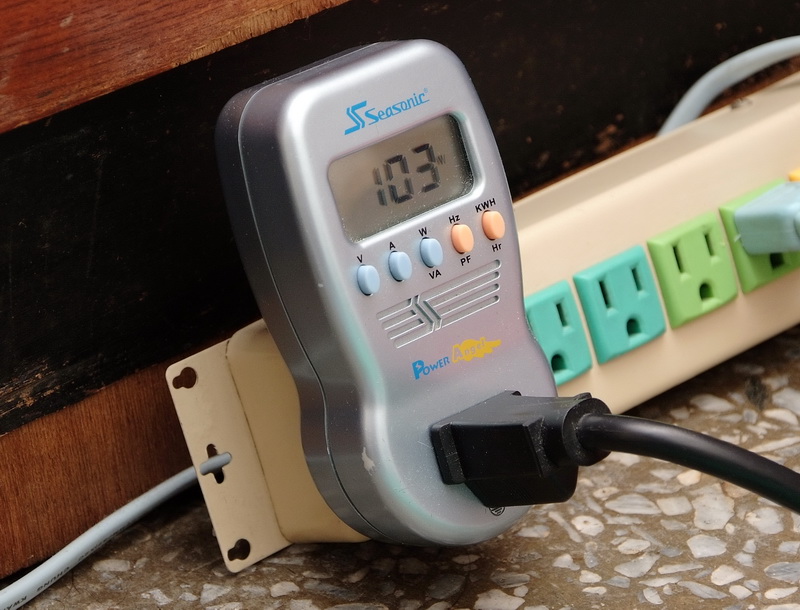
Comment